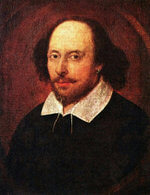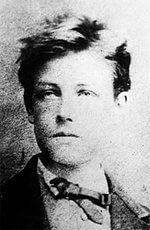Poetry Guide: Sonnet
The term sonnet is derived from the Provençal word sonet and the Italian word sonetto, both meaning little song. By the thirteenth century, it had come to signify a poem of fourteen lines following a strict rhyme scheme and logical structure. These have changed during its history.
Traditionally, English poets usually use iambic pentameter when writing sonnets. In the Romance languages, hendecasyllable and Alexandrines are the most widely used metres.
The Italian Sonnet
Main article: Petrarchan sonnet
The Italian sonnet was probably invented by Giacomo da Lentini, head of the Sicilian School under Frederick II. Guittone d'Arezzo rediscovered it and brought it to Tuscany where he adapted it to his language when he founded the Neo-Sicilian School (1235–1294). He wrote almost 300 sonnets. Other Italian poets of the time, including Dante Alighieri (1265–1321) and Guido Cavalcanti (c. 1250–1300) wrote sonnets, but the most famous early sonneteer was Francesco Petrarca (1304–1374).
In its original form, the Italian sonnet was divided into an octave followed by a sestet. The octave stated a proposition and the sestet stated its solution with a clear break between the two. Though Giacomo da Lentini octave rhymed a-b-a-b, a-b-a-b it became later a-b-b-a, a-b-b-a. For the sestet there were two different possibilities, c-d-e-c-d-e and c-d-c-c-d-c. In time, other variants on this rhyming scheme were introduced. Typically, the ninth line created a "turn" or volta, which signaled the change in the topic or tone of the sonnet.
The first known sonnets in English, written by Sir Thomas Wyatt and Henry Howard, Earl of Surrey, used this Italian scheme, as did sonnets by later English poets including John Milton, Thomas Gray, William Wordsworth and Elizabeth Barrett Browning. However, these poets tended to ignore the strict logical structure of proposition and solution.
This example, On His Being Arrived to the Age of Twenty-three by Milton, gives a sense of the Italian Form:
- How soon hath Time, the subtle thief of youth, (a)
- Stolen on his wing my three and twentieth year! (b)
- My hasting days fly on with full career, (b)
- But my late spring no bud or blossom shew'th. (a)
- Perhaps my semblance might deceive the truth, (a)
- That I to manhood am arrived so near, (b)
- And inward ripeness doth much less appear, (b)
- That some more timely-happy spirits indu'th. (a)
- Yet be it less or more, or soon or slow, (c)
- It shall be still in strictest measure even (d)
- To that same lot, however mean or high, (e)
- Toward which Time leads me, and the will of Heaven. (d)
- All is, if I have grace to use it so, (c)
- As ever in my great Task-master's eye. (e)
In addition to the rhyme scheme, English poets usually use iambic pentameter to structure their sonnets as Milton has done here. This is a rough equivalent to the hendecasyllable or Alexandrines usually used for Petrarchan sonnets in romance languages such as Italian, French and Spanish.
The English Sonnet
 William Shakespeare (National Portrait Gallery), in the famous Chandos portrait, artist and authenticity unconfirmed.
William Shakespeare (National Portrait Gallery), in the famous Chandos portrait, artist and authenticity unconfirmed.
History
The sonnet was introduced into English by Thomas Wyatt in the early 16th century. His sonnets and those of his contemporary the Earl of Surrey were chiefly translations from the Italian of Petrarch and the French of Ronsard and others. Sir Philip Sidney's sequence Astrophel and Stella (1591) started a tremendous vogue for sonnet sequences: the next two decades saw sonnet sequences by William Shakespeare, Edmund Spenser, Michael Drayton, Samuel Daniel, Fulke Greville, William Drummond of Hawthornden, and many others.These sonnets were all essentially inspired by the Petrarchan tradition, and generally treat of the poet's love for some woman; the exception is Shakespeare's sequence. In the 17th century, the sonnet was adapted to other purposes, with John Donne and George Herbert writing religious sonnets, and John Milton using the sonnet as a general meditative poem. Both the Shakespearean and Petrarchan rhyme schemes were popular throughout this period, as well as many variants.
The fashion for the sonnet went out with the Restoration, and hardly any sonnets were written between 1670 and Wordsworth's time. However, sonnets came back strongly with the French Revolution. Wordsworth himself wrote several sonnets, of which the best-known are "The world is too much with us" and the sonnet to Milton; his sonnets were essentially modelled on Milton's. Keats and Shelley also wrote major sonnets; Keats's sonnets used formal and rhetorical patterns inspired partly by Shakespeare, and Shelley innovated radically, creating his own rhyme scheme for the sonnet "Ozymandias". Sonnets were written throughout the 19th century, but, apart from Elizabeth Barrett Browning's Sonnets from the Portuguese and the sonnets of Dante Gabriel Rossetti, there were few very successful traditional sonnets. Gerard Manley Hopkins wrote several major sonnets, often in sprung rhythm, of which the greatest is "The Windhover," and also several sonnet variants such as the 10-1/2 line curtal sonnet "Pied Beauty" and the 24-line caudate sonnet "That Nature is a Heraclitean Fire." By the end of the 19th century, the sonnet had been adapted into a general-purpose form of great flexibility.
This flexibility was extended even further in the 20th century. Among the major poets of the early Modernist period, Robert Frost, Edna St. Vincent Millay and E. E. Cummings all used the sonnet regularly. William Butler Yeats wrote the major sonnet Leda and the Swan, which used half rhymes. Wilfred Owen's sonnet Anthem for Doomed Youth was another sonnet of the early 20th century. W.H. Auden wrote two sonnet sequences and several other sonnets throughout his career, and widened the range of rhyme-schemes used considerably. Auden also wrote one of the first unrhymed sonnets in English, "The Secret Agent" (1928). Half-rhymed, unrhymed, and even unmetrical sonnets have been very popular since 1950; perhaps the best works in the genre are Seamus Heaney's Glanmore Sonnets and Clearances, both of which use half rhymes. The 1990s have seen something of a formalist revival, however, and several traditional sonnets have been written in the past decade.
Form
Main article: Shakespearean sonnet
Soon after the introduction of the Italian sonnet, English poets began to develop a fully native form. These poets included Sir Philip Sidney, Michael Drayton, Samuel Daniel and William Shakespeare. The form is often named after Shakespeare, not because he was the first to write in this form but because he became its most famous practitioner.
The form consists of three quatrains and a couplet. The couplet generally introduced an unexpected sharp thematic or imagistic "turn". The usual rhyme scheme was a-b-a-b, c-d-c-d, e-f-e-f, g-g.
This example, Shakespeare's Sonnet 116, illustrates the form:
- Let me not to the marriage of true minds
- Admit impediments. Love is not love
- Which alters when it alteration finds,
- Or bends with the remover to remove.
- O no, it is an ever fixed mark
- That looks on tempests and is never shaken;
- It is the star to every wand'ring barque,
- Whose worth's unknown although his height be taken.
- Love's not time's fool, though rosy lips and cheeks
- Within his bending sickle's compass come;
- Love alters not with his brief hours and weeks,
- But bears it out even to the edge of doom.
- If this be error and upon me proved,
- I never writ, nor no man ever loved.
A variant on this form is the Spenserian sonnet, named after Edmund Spenser (c.1552–1599) in which the rhyme scheme is a-b-a-b, b-c-b-c, c-d-c-d, e-e. This example is taken from Amoretti
- Happy ye leaves! whenas those lily hand
- Happy ye leaves! whenas those lily hands,
- Which hold my life in their dead doing might,
- Shall handle you, and hold in love's soft bands,
- Like captives trembling at the victor's sight.
- And happy lines! on which, with starry light,
- Those lamping eyes will deign sometimes to look,
- And read the sorrows of my dying sprite,
- Written with tears in heart's close bleeding book.
- And happy rhymes! bathed in the sacred brook
- Of Helicon, whence she derived is,
- When ye behold that angel's blessed look,
- My soul's long lacked food, my heaven's bliss.
- Leaves, lines, and rhymes seek her to please alone,
- Whom if ye please, I care for other none.
The Modern Sonnet
As mentioned earlier, many English poets have used the sonnet form to great effect. The sonnet also became popular in French poetry, with even such avant-garde figures as Arthur Rimbaud and Stéphane Mallarmé writing sonnets.
With the advent of free verse, the sonnet came to be seen as somewhat old-fashioned and fell out of use for a time among some schools of poets. However, a number of 20th-century poets, including John Berryman, Edna St. Vincent Millay, Pablo Neruda, and Seamus Heaney, rose to the challenge of reinvigorating the form successfully.
The 21st century has seen a strong resurgence of the sonnet form, as there are many sonnets now appearing in print and on the Internet. Sara Russell is the editor of the UK e-zine Poetry Life and Times, in which she publishes hundreds of sonnets; Richard Vallance, the editor for rhymed verse in Poetry Life and Times, also publishes the Canadian Quarterly journal, SONNETTO POESIA ISSN 1705-4524, dedicated to the sonnet, villanelle, and quatrain forms, as well as the monthly Vallance Review on historical and contemporary sonneteers. Michael R. Burch publishes The HyperTexts and there are sonnets from well-known poets on his site.
See also
- Crown of sonnets
- Onegin stanza
- Petrarchan sonnet
- Poetry
- Prosody
- Quatorzain
- Shakespearean sonnet
- Spenserian sonnet
- Sonnet cycle
External links
These links are to sites with texts in English only:
- Sonnets.org
- Selective Historical Bibliography on the Sonnet = Bibliographie sélective de l'histoire du sonnet
- Some English Translations of Petrarch
- Wyatt's Sonnets
- The Legacy of Francesco Petrarch and Sir Thomas Wyatt: an Historical Perspective
- Spenser's Sonnets
- Shakespeare Sonnets – searchable database
- SONNETTO POESIA ISSN 1705-4524, From E-zine to Print Journal: Pros and Cons
- Cumulative Index to The Vallance Review, Poetry Life & Times (UK), 2001-2006
Poetry Kaleidoscope: Guide to Poetry made by MultiMedia Free content and software
This guide is licensed under the GNU Free Documentation License. It uses material from Wikipedia.


